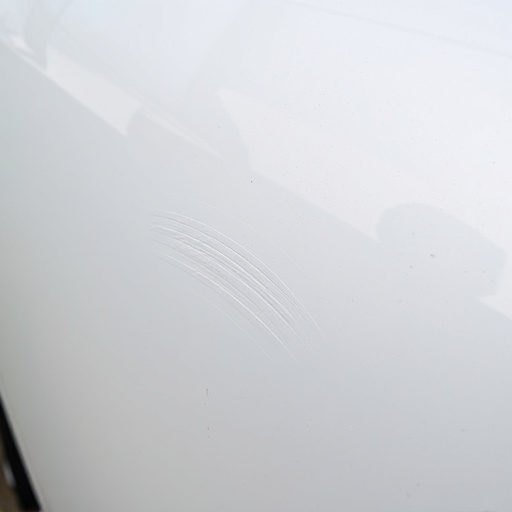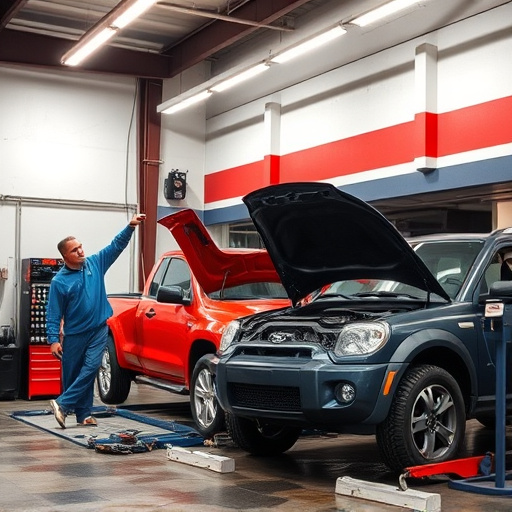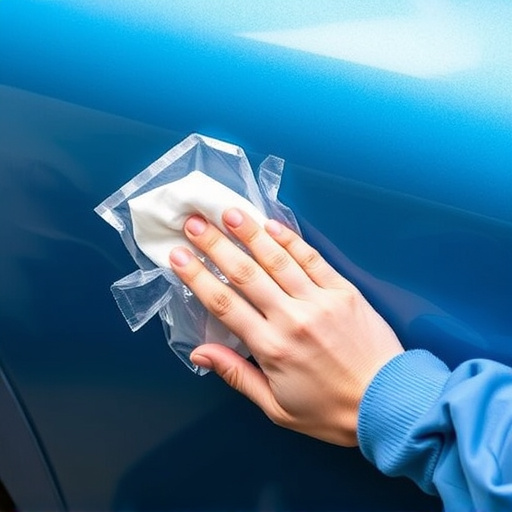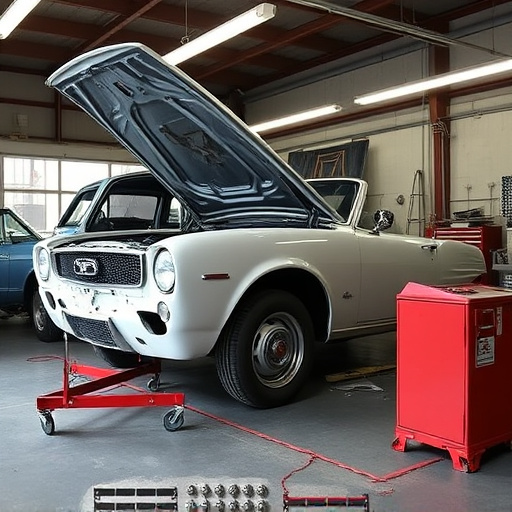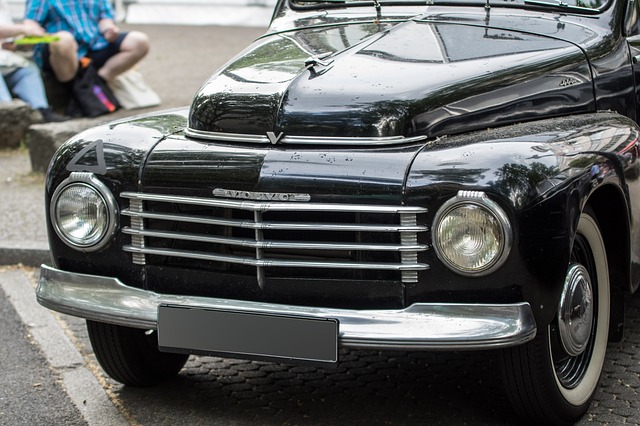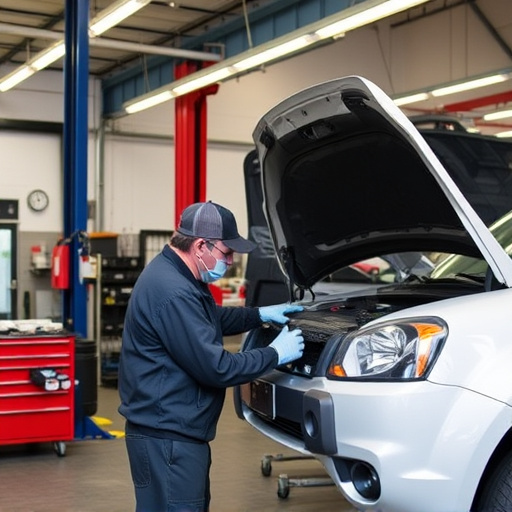Preparation is key in specialty paint application. This involves cleaning and repairing surfaces, using primers for a smooth base, and selecting suitable paints for aesthetic goals and project needs, like color matching and desired finishes. Safety measures, including protective gear and ventilation, are crucial, especially in auto repair settings, where equipment inspection, hydration, and breaks maintain focus and caution throughout the meticulous process.
Before diving into the intricate process of specialty paint application, prepare your space and equip yourself for success. This involves a meticulous surface preparation routine: cleaning, repairing, and priming for optimal adhesion. Select the perfect hue from an array of colors, choosing the right paint type and finish tailored to your project’s unique needs. Prioritize safety with adequate gear, ensure proper ventilation, and implement protective measures. These steps are pivotal in achieving exceptional results and ensuring a lasting, visually stunning specialty paint job.
- Prepare Surface: Clean, Repair, Prime
- Choose Right Paint: Color, Type, Finish
- Safety Precautions: Gear, Ventilation, Safety Measures
Prepare Surface: Clean, Repair, Prime
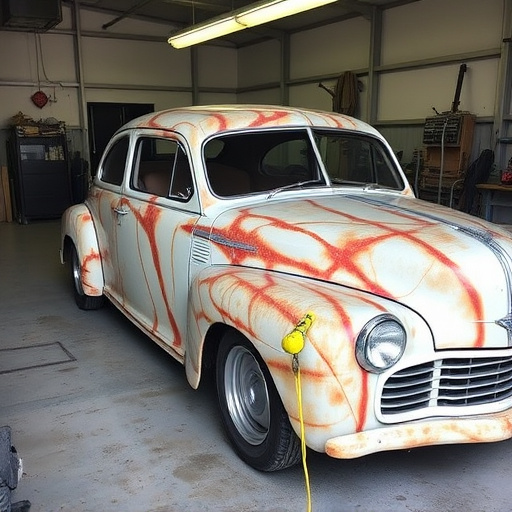
Before applying specialty paint, preparing the surface is a crucial step that involves thorough cleaning and repairing any damages. Start by removing all loose debris, dirt, and grease from the area to be painted using appropriate cleaning agents. This ensures a clean canvas for your new coat of paint, enhancing its longevity and aesthetics.
Additionally, assess the surface for any dents, scratches, or holes, especially in the case of auto painting and body shop services. Conduct necessary repairs, such as filling and sanding, to create a smooth base. Prime coating is also essential; it acts as a bridge between the old and new paint, providing better adhesion and ensuring a more even finish. This step is vital for achieving long-lasting results in any specialty paint application, whether for a vehicle dent repair or enhancing your home decor.
Choose Right Paint: Color, Type, Finish
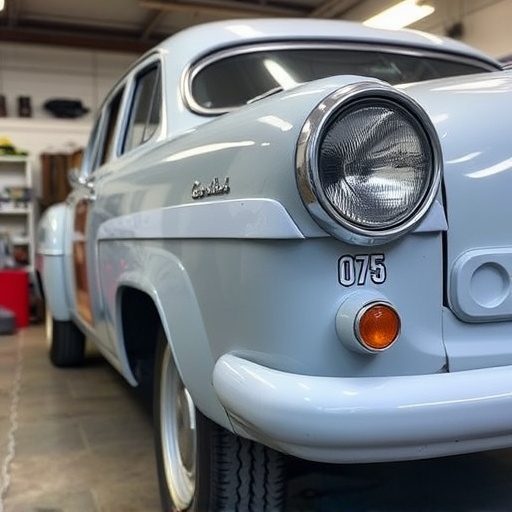
When preparing for a specialty paint application, selecting the right paint is paramount. The color choice should align with your desired aesthetic and the specific needs of the project. Whether it’s a vibrant new hue or a subtle restoration of an original shade, matching the exact color is crucial.
The type of paint plays a significant role in the outcome. Acrylics, for instance, offer durability and fast drying times, ideal for quick repairs. Enamels provide a glossy finish and superior protection against chips and scratches, making them perfect for high-end restoration projects like classic car restoration. The desired finish—matte, satin, or gloss—will also impact the final look and protectiveness of the paint job, influencing your decision in considerations like tire services or hail damage repair.
Safety Precautions: Gear, Ventilation, Safety Measures
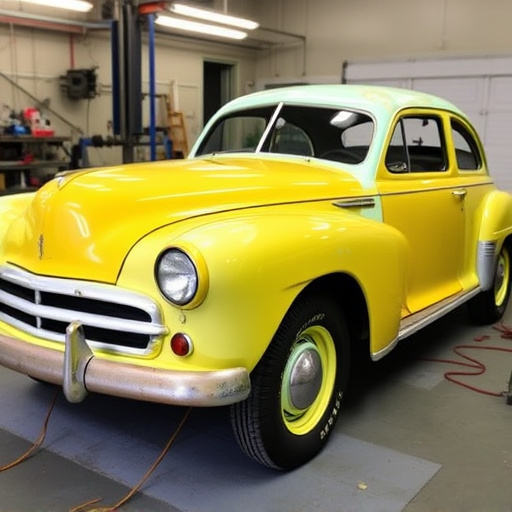
Before embarking on a specialty paint application, safety should be your top priority. Gear up for protection with gloves, goggles, and long-sleeved clothing to shield yourself from chemicals and debris. Ensure proper ventilation in both indoor and outdoor settings; open windows or use exhaust fans to maintain fresh air flow, minimizing the risk of inhalation hazards associated with paint fumes.
In any auto repair shop, collision repair shop, or even after a fender bender, adhering to safety measures is crucial. This includes using grounded electrical tools to prevent static build-up that could ignite flammable substances, and regularly inspecting your gear for wear and tear. Stay hydrated and take breaks to avoid fatigue, as focus and caution are paramount during the meticulous process of specialty paint application.
Before embarking on a specialty paint application project, thorough preparation is key. From cleaning and repairing surfaces to selecting the ideal paint and implementing safety precautions, each step contributes to a successful outcome. After all the meticulous planning, executing the application with proper gear, adequate ventilation, and safety measures ensures not only the quality of the finish but also the well-being of those involved. With these steps in mind, you’re ready to transform any space through the art of specialty paint application.


